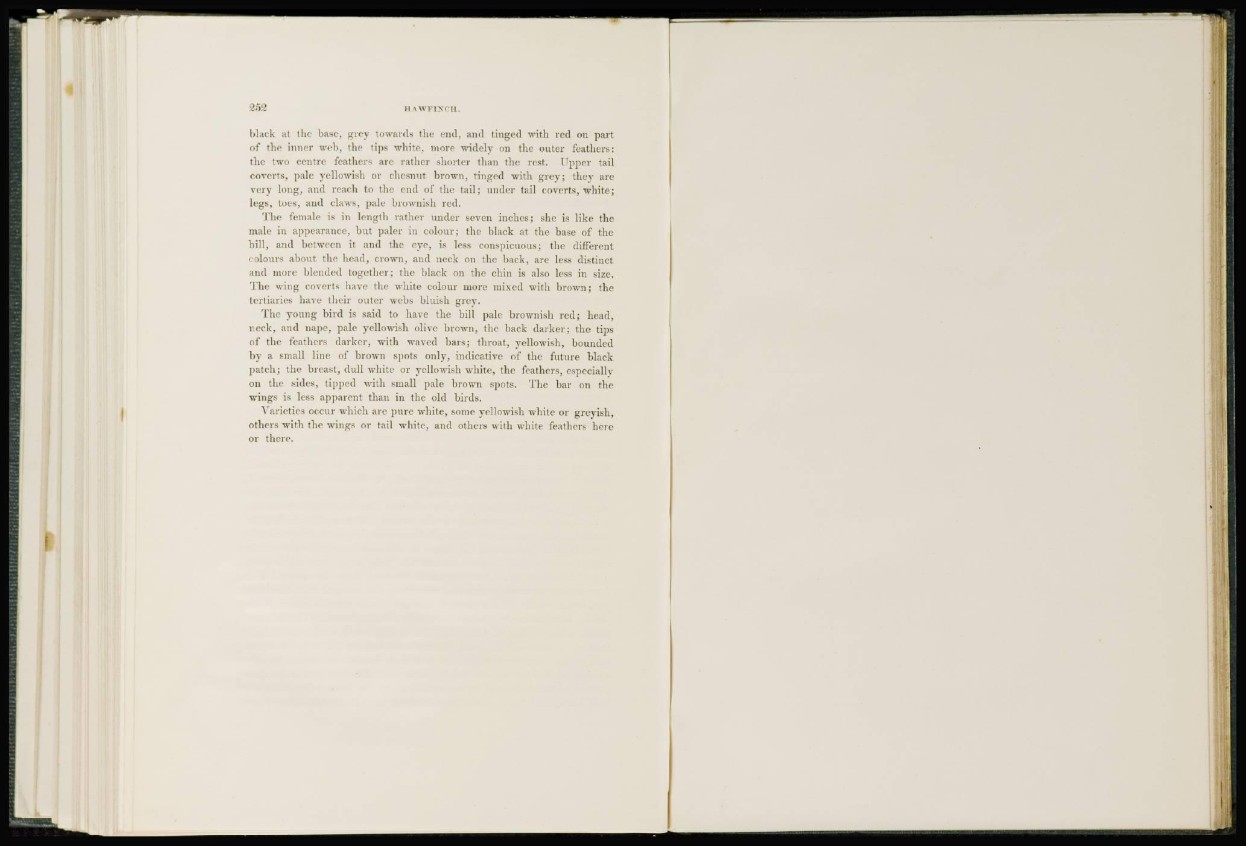
black at the base, grey towards the end, and tinged with red on part
of the inner web, the tips white, more widely on the outer feathers:
the two centre feathers are rather shorter than the rest. Upper tail
coverts, pale yellowish or chesnut brown, tinged with grey; they are
very long, and reach to the end of the tail; under tail coverts, white;
legs, toes, and claws, pale brownish red.
The female is in length rather under seven inches; she is like the
male in appearance, but paler in colour; the black at the base of the
bill, and between it and the eye, is less conspicuous; the different
colours about the head, crown, and neck on the back, are less distinct
and more blended together: the black on the chin is also less in size.
The wing coverts have the white colour more mixed with brown; the
tertiaries have their outer webs bluish grey.
The young bird is said to have the bill pale brownish red; head,
neck, and nape, pale yellowish olive brown, the back darker; the tips
of the feathers darker, with waved bars; throat, yellowish, bounded
by a small line of brown spots only, indicative of the future blaeh
patch; the breast, dull white or yellowish white, the feathers, especially
on the sides, tipped with small pale brown spots. The bar on the
wings is less apparent than in the old birds.
Varieties occur which are pure white, some yellowish white or greyish,
others with the wings or tail white, and others with white feathers here
or there.